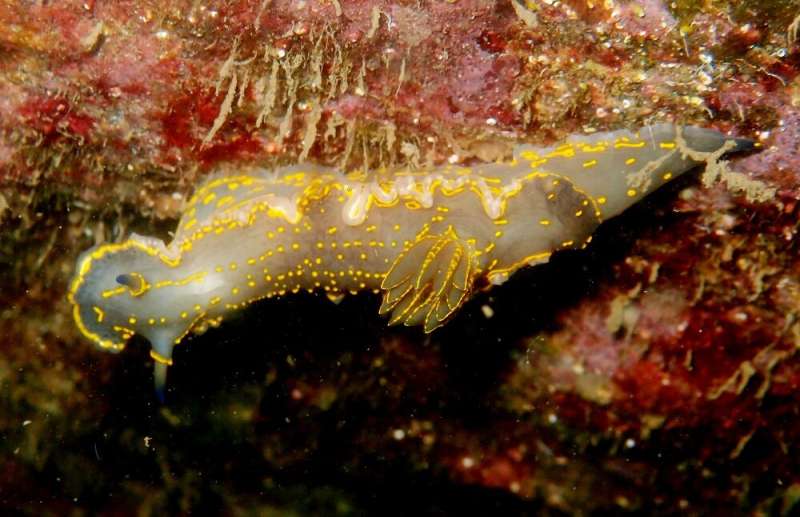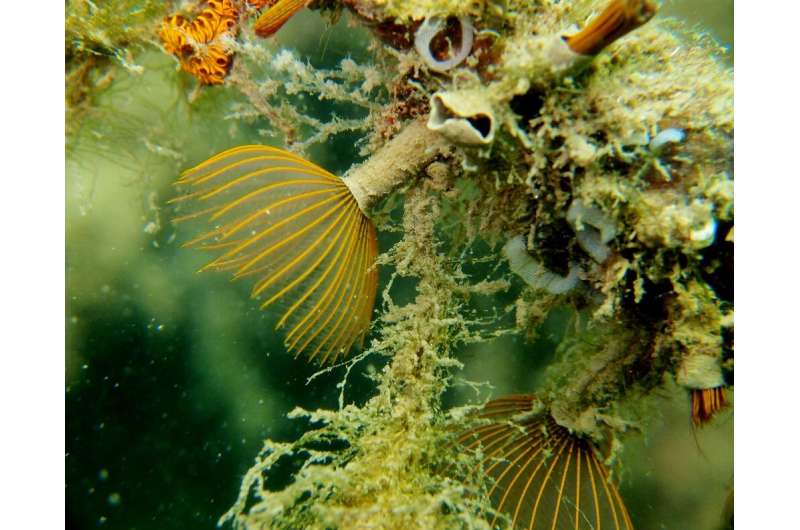The surprising marine biodiversity in the Barcelona Forum beach

A study identified 514 marine species in the bathing areas of the Barcelona Forum, an artificial beach affected by different anthropogenic impacts. This high biodiversity—which includes the presence of exotic species—is a shocking finding in such an altered marine habitat like this city beach in Barcelona (Catalonia, Spain).
The authors of the study are the experts Manuel Ballesteros and Àlex Parera, from the Faculty of Biology of the University of Barcelona (UB), together with Miquel Pontes, from the Marine Life Study Group (VIMAR); Xavier Salvador, from the Institute of Marine Sciences (ICM-CSIC), and Guillermo Álvarez, from the Catalan Federation of Underwater Activities (FECDAS). The paper was published in Monografies de la Institució Catalana d'Història Natural.
Citizen science to uncover the hidden marine biodiversity
The beach in Forum, located between the mouth of the Besòs River and the harbor of the Forum, is a small area, which is enclosed but connected to the open sea. A large part of the studied area is for nautical sports activities –it features a number of small recreational boats– and for bathing.
From 2017 to 2019, after more than 250 hours of diving, UB-IRBio experts and teams of citizen science volunteer collaborators from FECDAS and VIMAR analyzed the marine life of the Fòrum beach. Molluscs, fish, crustaceans, and algae are the most abundant groups identified in the study, according to the subsequent analysis of photographs and specimens examined in the laboratory.
The marine habitat of this artificial environment is quite stable "and that could be one of the factors that explain this great biodiversity," says lecturer Manuel Ballesteros, from the Department of Evolutionary Biology, Ecology and Environmental Sciences at the University of Barcelona. "The high specific diversity found in the bathing area—514 marine species—is surprising, since it is an area that is quite polluted anthropically, with remains from the construction of the pier itself, effluents from the Fòrum wastewater treatment plant and other waste (towelettes, pieces of metal plate, plastic containers, beverage cans, etc.)".
Apart from the exotic species, the organisms that have benefited most from the urban transformation of the Fòrum line are algae, sponges, bryozoans and colonial tunicates and fish typical of rocky substrates, i.e. benthic species that settle on a hard substrate.
Some species of algae and benthic invertebrates are able to settle on the surface of the vertical walls of the urban beach –and also on the stairs at the bottom of the bathing area and on the concrete base of the piles.
"The stones that are in the shallows create a good habitat for infralapidicolar invertebrate species, both mobile and sedentary. At the muddy bottom, beyond the central pylons, species capable of burying themselves find their ideal habitat. It is also a good spawning ground for cuttlefish and sea hares, and some fish species find shelter there during their juvenile phase," explains Àlex Parera, an expert from the Department of Evolutionary Biology, Ecology and Environmental Sciences at the University of Barcelona.
Exotic species in an artificial environment
The findings of fifteen exotic marine species in the Forum beach confirms the hypothesis of the tropicalization phenomenon that is taking place in some areas of the Mediterranean according to some research studies. "With the water temperature risings, especially in the interior of harbors and marinas, these coastal habitats are more and more favorable to the settlement of species from warmer waters," notes the expert Miquel Pontes (VIMAR).
Regarding the sea hare Bursatella leachii, an invertebrate that appears only in the beach in Forum sporadically, everything suggests that it does not have a negative impact on other marine species. Since it eats diatoms, this mollusc does not compete with other native species of sea hares, which are macroherbivorous.
"However, the polychaete Branchiomma luctuosum is a more abundant exotic species than Bursatella leachii and it is present on this beach almost all year round. Therefore, it could compete against other filter-feeding and suspension-feeding species," says Xavier Salvador (ICM-CSIC).

Goodbye to the fan mussel in the Forum city beach
According to the study, the fan mussel (Pinna nobilis)—the largest bivalve mollusc endemic to the Mediterranean—has disappeared from this urban beach. In 2018, at a depth of two meters in the bathing area, four live specimens could be counted, apart from some empty shells of the same species.
"Unfortunately, in previous dives, it was found that all specimens were dead, many probably due to the infection caused by the protozoan Haplosporidium pinnae, which has decimated the populations of fan mussels in almost the whole Mediterranean," says Guillermo Álvarez (FECDAS).
Waste and marine biodiversity
The deterioration of the quality of water –especially due to inputs from the Besòs river and effluents from the Fòrum wastewater treatment plant– is one of the main factors that endanger the conservation of marine species populations along the urban coastline. The behavior of some bathers or visitors does not help, since many throw rubbish on the urban beach and threaten marine biodiversity.
"Algae and invertebrate species have been found living on or under metal plates, or empty cans," authors say. "It seems a contradiction, but despite the deplorable appearance of some areas due to the accumulation of marine litter, some species can take advantage of the substrate created by these materials."
"In the future, it would be important to promote regular cleanings of the urban beach, promote environmental education for visitors –with a special emphasis on school groups and young students–, ban people from throwing objects into the water and place ecological containers as priority actions to preserve the ecological values of the marine environment in the bathing area of the Barcelona Forum," the authors conclude.
More information: Miquel Pontes et al, Biodiversity in anthropized marinas:The case of the Barcelona Forum bathing area (Spain) Monografies De La Institució Catalana D'HistòRia Natural (2021). DOI: 10.2436/20.1502.04.03
Provided by University of Barcelona



















